Published October 13, 2016, updated January 6, 2022 | lifted off the web from here.
Arrob@ Blog Entries
9.30.16 | Thank You Arrob@!
WILLIAM A. NERICCIO
Director, MALAS, The Master of Arts in Liberal Arts and Sciences Program, San Diego State University
Just a quick thank you to Claudia Milian and Dell Williams for all their help and generosity in bringing these 10 dispatches to your eyes. Thanks as well to the Program in Latino/a Studies in the Global South at Duke for being the utterly rad institution that it is! Here, as a parting shot, a beautiful black and white print of Margarita Carmen Cansino, also known as the one and only Rita Hayworth—her life story was the inspiration for two decades worth of work in Tex[t]-Mex and Mextasy and it is only fitting that we end with her poignant visage.
9.29.16
Comic Strip Mextasy Illustrated: The Postmodern, Poststructuralist Semiotic Play of Gus Arriola's Gordo
WILLIAM A. NERICCIO
Director, MALAS, The Master of Arts in Liberal Arts and Sciences Program, San Diego State University
Gus Arriola’s effort here is the stuff of history—breaking the fourth wall he reveals himself as a Mid-Century devotee of the postmodern: a contemporary/compatriot with the likes of Thomas Pynchon, Joanna Russ, and Umberto Eco.
Long toward the end of a long timeline that begins with the Lascaux cave paintings, there, just after the turn of the last century between Winsor McCay and genius-of-the-present-moment Chris Ware, rests the redoubtable master of sequential art, Gus Arriola. A Mexican-American artist from Arizona who ended up spending the rest of his life in California, Arriola’s comic strip Gordo delighted bemused and confused readers from November 24, 1941 to March 2, 1985. “Confused” because Arriola’s ambition, particularly in his Sunday splash-page cartoons, were the stuff of comic book legend, marrying the semiotic ambition and range of McCay’s earlier work, with a baroque, jazzy color palette (and a sublime disregard for the precision of the square panel—a precision, I might add, that has led to the banal cacophony of boring, shrunk, stiff compositions that fill the daily fishwrap today: yes, Mary Worth and Beetle Bailey, I am talking about you).
Of course, this is the Sunday funnies/fonnies, so the gag is still there. But there, too, is a cunning collaboration pairing jazz improvisation with semiotic artistry.
Gordo is best remembered for being one of the few daily, mainstream, narrative artifacts that was focused on Mexico, Mexicans, and Mexican culture—also one of the few that was positive and evocative (though, irony of ironies, Gordo begins as a strip focused on a fat, lazy, “Mexican”--scare-quotes necessary, por favor). In an American popular culture sea of stereotypes featuring raping bandit Mexicans (in case you’re wondering where idiot Donald Trump gets his ideas), dirty, pre-civilization Latinas/os, and the rest, Gordo evolves as a brimming visual cauldron of subterranean semiotic insurrection, surreptitiously introducing readers to Mexicans and Spanish-language culture with a light touch, and a rigorous and disruptive compositional eye. Old school hands in the comics trade like Mort Walker and Charles Schulzenvied Arriola’s eye and pen, with Charlie Brown’s father touting Arriola’s strip as the “the most beautifully drawn strip in the history of the business.” Like the aforementioned Chris Ware, Arriola’s genius rested with what used to be called postmodern aesthetics—as much as Arriola loved to tell a story he also (and simultaneously) told a story about stories (meta-narrative from a Chicano meta-mensch)
Yet another Sunday effort focused on making music, this time classical pieces, visual.
All the sister arts made cameos in Arriola’s canvases, not just music. Here the ridiculous outrages of Abstract Expressionism falls across Gus’s panels (Kurt Vonnegut’s Rabo Karabekian artist character follows a similar vein).
For me, a little Mexican-American kid growing up in the 60s, Arriola’s warped and warping lines did a number on my imagination—though I was born on and in the U.S./Mexico border in Laredo, Texas, and was, as a result, submerged in Tex-Mex/Mexicano cultura, the English-language/ ‘Merican side of my psyche was utterly bereft of Mexican influences—in this regard both Speedy Gonzales and Gordo are like bizarre twin angel and devil perched upon my shoulder, speaking in English (but with a decidedly “Mexican” accent) and seducing my psyche with parsed and unparsable utterances that moved and delighted me on the surface and had deeper, unknowable impacts elsewhere, marking my career in cultural studies.
The Director’s Cut: Dear Arrob@ reader, do note that this piece of writing has had a long sordid history: a somewhat truncated version of this piece first appeared in Joshua Glenn’s cool online magazine Hi-Lobrow.com. Next, it appeared in The Routledge Companion to Latina/o Popular Culture edited by my good friend and collaborator Frederick Luis Aldama.
In its first incarnation, Josh Glenn put his able editorial pruning shears to work and edited it down to a squib (I still love you, Josh!); next, the production team at Palgrave/Routledge got the bright idea to cut out ALL of the images—writing about Gus Arriola without sharing his vivid, artful comic provocations is madness. So here, on Arrob@, you get the director’s cut. I pray the shade of Gus Arriola visits me in the night and gifts me with a shred of his lucid, evocative imagination!
9.26.16
Bibliographies in the Archive: One Fragment from the Historiography of Chicanas/os
WILLIAM A. NERICCIO
Director, MALAS, The Master of Arts in Liberal Arts and Sciences Program, San Diego State University
Every now and then a piece of primary textual archeology falls into my lap and I never know what to do with it. This past weekend, a good friend, Teresa White, of San Diego, whilst prowling her late father's library, came upon this bibliography of Chicanodom, circa 1970; it features a striking cover design by Marcos Gomez (high-res jpg above) and the work of then librarians Betty Blackman and Charles J. Boorkman. With the assault on Chicano/a Studies now firmly part of our 21st century reality, it is bracing to see our field(s) when they were still nascent/incipient. Even 42 years ago, serious librarians were active, chronicling research materials for a discipline that would change the face of American intellectual culture. Share with any other bibliophiles/librarians you think might enjoy this trip down memory lane. The backstory on the California State University Long Beach (CSULB) Library can be found here. Click the image below to receive the pdf-file of the bibliography--do note it is a 15.4 mb file.
This post originally appeared online at the Tex[t]-Mex Galleryblog.
9.21.16
Barrio Nostalgia and Guadalupe Rosales's Veteranas and Rucas: Instagram and the Curation of All Our Yesterdays and Tomorrows
WILLIAM A. NERICCIO
Director, MALAS, The Master of Arts in Liberal Arts and Sciences Program, San Diego State University
The internet is so much about what to look at.
For me, that’s weird. You see the bulk of the first part of my life was bound up with reading—which is all about looking at things, reading words, but has little to do with seeing, with reading pictures.
It is true that as a kid, I was all about reading while seeing, with Richie Rich, Mad Magazine, Vampirella, Batman, Eerie, and Plop! infecting the technicolor corridors of my imagination.
But after that came college and graduate school with a major in literature—so novels took over (that and critical theory), so words came to dominate the scene of my life.
And so, now, I return to pictures. “The Medium is the Message,” Marshall McLuhan told us, and he was right especially when you think about old pictures and Polaroids from the 60s onward. Now decaying and disappearing, Polaroids are so much an image of yesterday for my generation (I was born in 1961), that we find ourselves magically drawn to the form today (even if it is just in the form of Instagram filters, digital magic that transforms a picture from 2016 into the semiotic twin of a picture taken in 1966).
Which brings me to the current rage for Guadalupe Rosales’s collective curating project on Instagram called Veteranas y Rucas: SoCal Youth Foto Archive, recently profiled in L.A. Weekly, Remezcla, and Mitu.
I keep going back time and again to see a past that mirrors much of mine—though tons of the pictures capture life in Southern California before 1990, they evoke an aesthetic, a feel, a groove, a rhythm, and an eros, more on that below in the last picture, that I can’t get enough of. Some folks get addicted to opioids, I am done in by a lowrider car from 1973. Some like the sweet euphorics of Mollies (Ecstasy), I get sidetracked by the raging hair on some random “ruca” or “veterana” that takes me back to Laredo, Texas, circa 1977.
Here are some recent snapshots from the site that I bookmarked that are talking back to me…
Nina Vera sits atop the cool old car, hand to hair, addressing the camera with the knowing look of someone going somewhere. Many of the pictures on this site give voice to strong women, rucas and veteranas of substance, whose beauty is a function of their strength, their strength somehow locked dialectically with their beauty. Are we speaking of an aesthetics of power or the power of aesthetics? It does not matter. All that echoes back to me is the pathos of the photograph, a relic of a woman and a moment fading past memory.
As moving as the photographs are the commentaries of those who remember, those who reach out, sharp arch missives from friends from the past immortalized (or, as immortalized as you can get on the internet) by the archiving power of a hashtag, of a website. Instagrams, like the Western Union Telegrams from the past that inspired their name, hit with the power of life and death, a snapshot from yesterday that reaches out from the past to the future with the power to compel you to return, to memory, to pieces of yourself you left behind, hid, or forgot.
I am the youngest of three children born and raised in Laredo, Texas, with two older sisters, so perhaps I am drawn more to the photos of women—my memory of being a young man in Laredo is always bound up with my outsider status, too gringo-affiliated (Gilligan’s Islandmore my cup of tea than Siempre en Domingo) and too pocho to be truly Laredense, I was never just one of the vatos. Similar complications and my own teenage awkwardness led to a similar status with the ladies, but still, old habits die hard. So I find myself witnessing the images of these rucas, watchful of the evolving styles of hair and dress of the veteranas, time and again. Do you look at pictures as I do? I look into the faces and wonder about the secret yearnings of their hearts—their frustrations, their ciphered dreams and desires. Looking closely, I try to piece together answers to the mysteries of strangers with whom I have no history, no knowledge, looking for some kind of magic Rosetta stone that will translate their muted testimony into something I can understand.
In my art, I try to give honor to women of these lost generations—to evoke the mextasy of a yesterday that should be part of today. Here are a couple:
I will end here with a picture of some vatos, rucas, veteranas, and more from my own past—it is 1981 and a group of old friends from Laredo, Texas, are drinking it up at a friend’s apartment in Austin, Texas. See if you can pick me and my girlfriend Rosalinda Flores out, we are the ones smiling back at you on the right.
9.16.16
Cholo Goth Culture via Remezcla
WILLIAM A. NERICCIO
Director, MALAS, The Master of Arts in Liberal Arts and Sciences Program, San Diego State University
Just a quick posting this fine Friday morning for my new friends and readers here at Arrob@! If you are not already following Remezclaonline, you are missing out on a treasure trove of Latinx pop culture deliciousness and amazingness. Just this morning into my in-box comes a hot, breaking story on Cholo Goth—
Cholo goth is powerful because of its presumed contradictions — the violent machismo of Chicano gang culture and the sensitive self-expression of goth music. To be goth is to be outcast, but to be cholo goth is to be an outcast amongst outcasts. 'I had to fight to dress this way, man,' Reyes tells us, his rings clicking on the conference room table we’re seated around. On the day Prayers visits the Remezcla office in Brooklyn, it’s 95 degrees and humid outside, but both Reyes and Parley are dressed completely in black, from boot to fingertip. Parley is wearing his signature beanie; Reyes’ shaved head is covered in tattoos.
Read Remezcla's music feature here.
Have a great weekend Arrob@heads! If you want to check out more of my various projects go to my online barriohive here.
9.14.16
Summer Reruns for my New, Amazing Arrob@ Readers: Lazy Textmex Ramblings
WILLIAM A. NERICCIO
Director, MALAS, The Master of Arts in Liberal Arts and Sciences Program, San Diego State University
Once again, I rely on a couple of reruns to fill the pages of Arrob@’s online wonderfulness—here, two recent dispatches from the Tex[t]-Mex Galleryblog, where I usually hang my semiotic sombrero:
Pappy's Golden Age Blogzine continues to emerge as the premier treasure trove for stereotypes-seeking cultural studies workers probing the backstory for anti-Mexican loathing--enjoying a Trump-led renaissance these days.
Turns out the fat, corrupt, racist/rapist (Trump, not the "Spider"), did not have to dig too deep to conjure frightening hallucinations of swarthy, scary ethnic criminality. Below appear some choice page selections--the whole epic tale is available here.
The March-April edition of Prize Comics Western hit the newsstands in January of 1950 and this issue has a treasure trove of findings for you, my fellow stereotype-hunters! Penciled by M. Bailey, the story has everything--gore, hangings, treachery etc.--most of it perpetrated by angry, racist gringo Californians hot on the lusty trail for gold, Mexican blood and more!
The star/victim of "Robin Hood of the Sierras" is Joaquin Murrieta, "bandit"/national hero/corrido-fodder from California history. More on Murrieta here.
An added treat for followers of the #bizarrecaucasianbestiary hashtag on Blogger, Tumblr, Instagram, and Facebook? None other than "Sandy" the self-wetting rubber doll! Ack!
For more info on Murrieta, California history, and other alleged "rogues" of the Western era, look up Revolvers and Pistolas, Vaqueros and Caballeros: Debunking the Old West (Intersections of Race, Ethnicity, and Culture) by Cuban cultural critic and librarian Danilo H. Figueredo.
Comic scan source? The awesome Digital Comics Museum! Here’s the entire, lurid Murrieta saga, warts and all:
9.12.16
Bouncing between the Ivory Tower, the Art Museum, and the Funny Farm
WILLIAM A. NERICCIO
Director, MALAS, The Master of Arts in Liberal Arts and Sciences Program, San Diego State University
I remember the day clearly, the contours of the memory etched onto my synapses with a glaring lucidity. I am a new professor at SDSU in the Fall of 1991—recently of UConn, I have opted to leave my job there midstream and cast my lot with fun-in-the-sun Southern California. In the English Department at SDSU, my administrative coordinator was Barb Schloss, no one’s fool—she was a tough as nails, SoCal blonde, who liked things done the right way—her way! Picture Janet Leigh from Touch of Evil and Psycho but with the impatience of a German train conductor.
I strolled into the office, then in the bewildering Adams Humanities building, with my new syllabus for my first class at SDSU—at the time, I was into the cut-and-paste-look of 80s-era ‘zines and my syllabus looked more like an Austin, Texas rock poster than a proper college syllabus.
© MICAEL PRIEST. The Ramones & Aalon. Armadillo World Headquarters. 14 July 1977. 17.5" × 11.5".
I can’t find that syllabus in the sprawl of my office, but here is one, from a year later that captures some of that look and another, more recent, and online, that sought to capture that vibe.
Back to my story. So I walk up to Barb with my syllabus and she takes one look at it and is not happy. “English Professors don’t put pictures on their syllabi—I’ve never seen anything like this; English Professors don’t do art.” To this day, the words echo through my consciousness.
The short of it is that she refused to gum up her precious Xerox/Risograph machines with my semiotic (and in her view, semi-idiotic) drivel—I had to run down to Kinko’s and print them out myself.
That incident stayed with me the next year when I started to "do art." I resolved to only publish my art under the name Guillermo Nericcio García, my primo/cousin/artist-nom-de-plume and alter-ego. To this day I maintain a website for his identity.
With my traveling Mextasy show (see the earlier blog posting on Arrob@ below), I have since expanded the part of my universe that dabbles in art—if you are ever traveling (from London to Columbus, Ohio, to Manhattan, to Leiden), look for my “Dawg” tag on the walls and corridors of local dive bars.
All of this as a preface to a brief gallery of my posters that I maintain online.
Please go there and see the whole collection—here I will only reference some of my favorite posters with a line or two about their origins.
1. “Erik Estrada, Lady Magnet”
© GUILLERMO NERICCIO GARCÍA (2013).
Right now I am writing a new book via email with Frederick Luis Aldama, whose prolific textual output makes Jacques Derrida seem like a slacker. The book is called BrownTV and is a theory-laced, illustrated conversation about Mexicans, Mexican-Americans, and other Latinx bodies on the boob tube from the 1950s till today. One of the key figures I talk about in the book is heartthrob Erik Estrada—you can see the impact he had on me in this illustration. I love collage as an art praxis and am even fonder of vintage ads from the 1940s-50s. In my art, I like to juxtapose yesterday with the more recent past, always in an effort to foreground spectators, spectators that are always implicit, invisible, or absent in graphic representations of ethnic American bodies. You can see me toying with this above with Estrada the object of affection for gaggles of adoring white housewives, Stepford “dames” besotted with the brown vato’s hot, Latino charmingness.
2. “SPOCK, CHICANO! {MOCK NEWSPAPER HEADLINE}”
© GUILLERMO NERICCIO GARCÍA (2014).
Here’s my description from The Eyegiene/Mextasy Poster Shoppe y Tiendita: “Yet another ridiculous mashup from the imagination of Guillermo Nericcio García--this time the half Vulcan, half Human Spock is revealed for what he was, a weakly ciphered fictional meditation on the mestizaje! That's right, Jewish-American actor Leonard Nimoy, the first primetime Chicano--ni de aquí, ni de allá!” Of course the description is tongue-in-cheek, but not totally. The appeal of the “half-breed,” of the alien mestizaje, in American pop-culture is fodder for current and future American Studies dissertations and books.
And lastly,
3. "Not Chicano #2"
© GUILLERMO NERICCIO GARCÍA (2008).
The result of my imagination, a ripped-out, torn magazine ad for Brooks Brothers, a fat sharpie pen, and tape, Not Chicano #2 was the second in a series of graphic experiments that ended up in the traveling Mextasy exhibition. A blend of the obvious (no way those two gabachos are Chicano!), and, perhaps the more subtle (“not Chicano” a possible double double-negative in the Sartrean sense of the “ethnic-existential”), it remains one of my best-selling, most requested graphic inventions.
Watch this space for more to come in the near future at Arrob@.
9.06.16
Yet Another Rumination of the Dazzling Life of Lupe Velez, 'Mexican Spitfire'/Hollywood Superstar
WILLIAM A. NERICCIO
Director, MALAS, The Master of Arts in Liberal Arts and Sciences Program, San Diego State University
Just have time for a quick posting today on one of my all-time favorite Mexican/Hollywood superstars, Lupe Velez—as an added treat, I include a reposting of a February piece on Lupe from my Tex[t]-Mex Galleryblog, where I have been blogging since late 2006! That’s right—a decade of postings on “Mexican,” Mexican, and Latinx (Latina/o for the older set) artifacts.
One of my reliable sources of material on Hollywood Mexys is the Heritage Auction house—this morning they dropped this gem into my in-box:
Here is the posting on Lupe from February:
"Give Us One of Those Latin Bombshell Dances": Lupe Velez Comic-Generated! Another Great Chapter in the History of Mexicans in American Mass Culture
Time and again I have tipped my sombrero to the remarkable treasures to be found at Pappy's Golden Age Comics Blogzine, but now he has outdone himself with a post that jibes/gels/fuses with my #textmex and #mextasy researches/art/presentations and more.
One of his latest entries is a comic book from 1951 that fictionalizes the life and times of Lupe Velez--the 'Mexican Spitfire' that figures at the heart of my research in Myra Mendible's From Bananas to Buttocks: The Latina Body in Popular Film and Culture (University of Texas Press, 2007) and in my own Tex[t]-Mex: Seductive Hallucinations of the "Mexican" in America (Quality Comics’ Love Secrets #41 [1941], reprinted from Love Confessions #9 [1951].)
Click the images here to be plunged into mexstatic semiotic pleasure or go to Pappy's blog to read the whole story. Read my interpretation of Lupe Velez's life story--her career in cinema and the tragic climax to her life––here.
You can see all of my Textmex Galleryblog postings on the so-called Mexican Spitfire here.
9.04.16
Collector, Curator, Conservator, Hoarder: Meditations on the Day-to-Day Life of a Chicano Cultural Critic
WILLIAM A. NERICCIO
Director, MALAS, The Master of Arts in Liberal Arts and Sciences Program, San Diego State University
It’s the holiday, so I thought I would throw up a lite posting documenting some of my recent findings as I spelunk dimly lit streets, old junk stores, and the internets in search of #mextasy.
What is "Mextasy?"
A few years after I published Tex[t]-Mex: Seductive Hallucinations of the “Mexican” in America, Rachael Brown, an artist and professor at South Texas College in McAllen, Texas, asked me if I ever had thought of turning my book into a gallery exhibition. The answer was a resounding "no." I had spent 16 years bringing that magnum opus on Latina/o stereotypes to light—the last thing I wanted to do was to cart up my hoardings of Latina/o art and stereotypes artifacts and put them up in a museum.
Another thing: I am an English professor. While I was a cartoonist in high school, the Ivory Tower has inculcated in me the methodology of the scholar. Museums, galleries, didactics, and the like were mysteries to me. But I did it, and it was a success—here’s a short list of the universities where Mextasy has seen the light of day:
Not too shabby, right, for an English professor! Also, I think I owe Rachael Brown a ton of money.
Lately though, the Mextasy circus/bandwagon has slowed and my analog amassing of stuff has died down as well. But habits die hard, so I have continued amassing a digital online collection of semiotic stereotype-laced wonders. This includes negative Debby-downer anti-Mexican hate stuff like this sign from a Dallas restaurant:
and ultra progressive art by Latinx seers whose visionary canvases help us to, er, whitewash, the damaging violence stereotypes wreak on our tired synapses—here, for example, the work of Izel Vargas from the lower Rio Grande valley:
One of the newest places I have been amassing digital artifacts is on Instagram, where I have met scores of cool graphic artists. Here are some of my recent postings.
My good friend Bola Juarez discovered a treasure trove of original movie posters from the span of the 20th century in an old movie house in southern Mexico near Chiapas—I am going to be helping to mount this treasure find as a museum exhibition:
Here’s another shot of this awesome, amazingly preserved artifacts that document a slice of the history of cinema in Mexico:
Some of my most exciting postings are actually repostings of established and new Latina/o graphic artists from across the web. This one by Desirée De León, a 27-year old neuroscience doctoral student from Georgia is evocatively simple, moving, and beautiful:
Of course, also, I include the banal (and also beautiful). A couple of years back I was working with some crazy producers and cinematographers trying to develop an Anthony Bourdain-style travel/culture TV show called Mextasy—you can see a trailer here. The star of that show, in my humble opinion, is my cat, Wallace (who has his own hashtag #WallacetheCat). Here he is in a recent pose:
Last but not least, I do still occasionally collect real, analog artifacts that document the representations of Mexican-Americans, Mexicans, and other Latinas/os in American popular culture—some habits die hard:
9.02.16
Funny Things Happen when You Begin to Collect Ersatz 'Mexicans': Tales of El Rey Guapo, 'El Dorado' from ABC Television's and DC Comics' 1980s Roboot of 'Super Friends'
WILLIAM A. NERICCIO
Director, MALAS, The Master of Arts in Liberal Arts and Sciences Program, San Diego State University
An odd claim to fame (and infamy), my work in the Ivory Tower (and beyond) is associated with all manner of manufactured, invented, fabulous, and ersatz “Mexicans.” My first (and only, for now) book, Tex[t]-Mex: Seductive Hallucinations of the “Mexican” in America, does its best to analyze (and, in some cases, vivisect) all manner of invented Latinxers prowling around the infotainment corridors of the Americas—from Speedy Gonzalez and Charlton Heston (Vargas! in Orson Welles’ Touch of Evil) to Salma Hayek and Rita Hayworth (born Margarita Carmen Cansino, but not even “Mexican” at all, being of Spanish and Irish pedigree).
So collecting (I say it is curating not hoarding) Mexicanesque and Latina/o artifacts takes up tons of my time and crowds most of the alleyways of my imagination.
Case in point and the object of my current obsessions: EL DORADO.
A B-star to be sure in the stable of ABC’s Super Friends, 1980-82 (think The Justice League of America with hyper foul and cheap limited animation, aka crapimation), El Dorado never appeared in a real comic book—instead, he was an add-on walk-on for DC’s Saturday morning superhero drama.
Take it away wikiworldia: "El Dorado was created solely for the Super Friends cartoons and has never appeared in a DC Comic. He first appeared as minor character in animated shorts that aired in 1981 season and later in Super Friends: The Legendary Super Powers Show as a full-time member. El Dorado spoke English with an accent, sporadically substituting common Spanish words or phrases, such as adding words like ‘rápido’ and replacing nearly every instance of 'yes' with 'sí.'"
Imagine some peculiar, animated grandfather of Dora the Explorer and you’ve got the right picture. Debate rages regarding his superpowers but they seem to be limited to teleportation and projection using the magic of lovely red cape. No Superman, El Dorado’s main power seems to be his Mexican accent, his uncanny ability to disappear and, for ABC at the time, tap into the growing 'Hispanic' demographic.
Watch for the flash of him toward the end of this clip right after the “Apache Chief,” fodder for a future Native American blog poster!
Sharing secrets time.
...the fun thing about a blog is that it combines the intimacy of a diary with the privacy of an Amsterdam red light district window (aka, no privacy, and, also, a fair amount of exhibitionism)...
My current El Dorado is to add El Dorado, the Super Friend plastic action figure/ersatz "Mexican," to my traveling Mextasyexhibition/museum pop-up show/circus of desmadres. If any of you out there are friends of #Mextasy (search the hashtag on Instagram, Facebook, and Twitter) and want to send him to me as a surprise gift and want the figure (and yourself, can you say "selfie"?) added to the Mextasy show, write me at memo@sdsu.edu
09.01.16
'Dumb and Dumber in Mexico City,' or The Meeting of the 'Minds': Donald Trump and Enrique Pena Nieto
WILLIAM A. NERICCIO
Director, MALAS, The Master of Arts in Liberal Arts and Sciences Program, San Diego State University
One might want to say here that the cultural critic is speechless, that the spectacle of Mexican-loathing Donald Trump flying into Mexico to meet with the President of the land he has built a campaign hating leaves one with little to say save for grunts, maldiciones (that’s "cussing" for my monolingual readers), and high blood pressure. But speak we must even as we lament spilling more ink on a nauseating "short-fingered vulgarian" with a plagiarizing wife, sci-fi hair, and fascist-fueling rhetoric.
Visual critics were some of the first to drop semiotic vitriol on the twin idiots of the North American stage—Peña Nieto presently polling with an approval rating in the 20s and pendejo Trump, the darling of the sheet-wearing set. Here is a random sampling—I am in debt to the Guardian for some of these images.
All over the twittersphere, resurrected images of the Trump “pendejo” meme appeared fast and furious during the day yesterday whilst his Trumpness flew to Mexico—prelude to a ghastly anti-immigration festival he staged last night in Arizona:
The twitter feed of Mexican political cartoonist Luis Cuesta, was particularly engaging between his Dumb and Dumber riff...
...and his pointed cartoon underscoring the perilous position Trump and Peña Nieto share with regard to the American (that’s the United States and Mexico, sportsfans) populace:
Of course illustrated exposés on the Donalds’ idiocy has come fast and furious over the last year—some of the best coming from Latina/o artists. Some of the most pointed political Trump cartoonery (buffoonery meets cartoons) has come from the pen of Lalo Alcaraz, writer, artist, troublemaker, and key contemporary American satirist. Alcaraz is like some cool blending of William Hogarth and Jonathan Swift, some untoward fusion of Charles M. Schulz and Che Guevara. In both his political cartoons and his daily comic strip, La Cucaracha, Alcaraz unleashes a flurry of illustrated scalpel cuts—his blend of wit and progressive politics (think Mad Magazine meets The Nation) exposes the fetid underbelly of Trumps’ support network, the phalanxes of multicultural hating Americans who have felt muzzled by political correctness. Alcaraz helps us see and deal with the spectacle of Trump-adoring neo fascists, closeted racists yearning to give voice to their hate.
William A. Nericcio is Professor of English and Comparative Literature & Chicana/o Studies at San Diego State University (SDSU). He is the Director of MALAS, The Master of Arts in Liberal Arts and Sciences Program at SDSU. Professor Nericcio is the author of Tex[t]-Mex: Seductive Hallucinations of the "Mexican" in America (University of Texas Press, 2007). His latest book-length meditation on visual culture in the 21st Century, Eyegiene, is also in preparation for the University of Texas Press. His most up-to-date blog entries on stereotypes and American mass culture can be found on The Tex[t]-Mex Galleryblog.
![The Tex[t]-Mex Galleryblog](https://blogger.googleusercontent.com/img/b/R29vZ2xl/AVvXsEh_KqWRy3aDsokE_MKZPvSky0JCY5DtTUqNZ1YcuqLN4LzX6kUbISADnHe9CR8IEBlhVVcnUnXMjc1EY54oLPx-aOoWF_VdXOokJ2Y2smvV1WCxEu2TZguczGSloiFnkz4iQ_SkIi56dw/s400/111Screen+shot+2014-04-01+at+10.jpg)



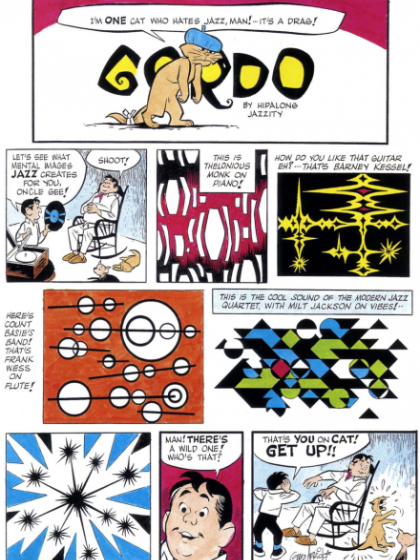



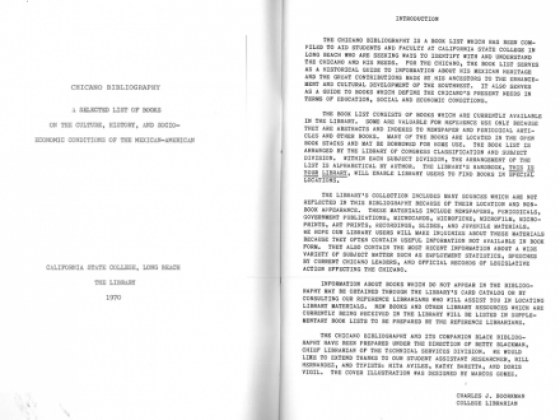

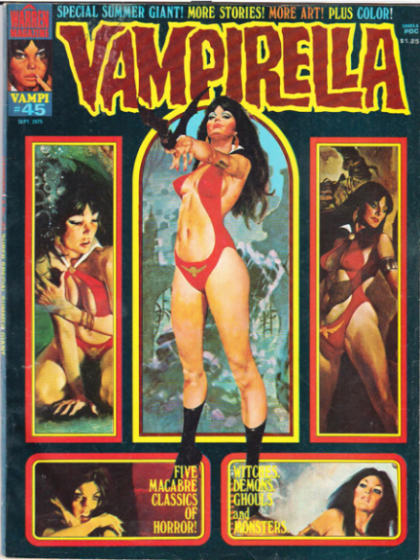
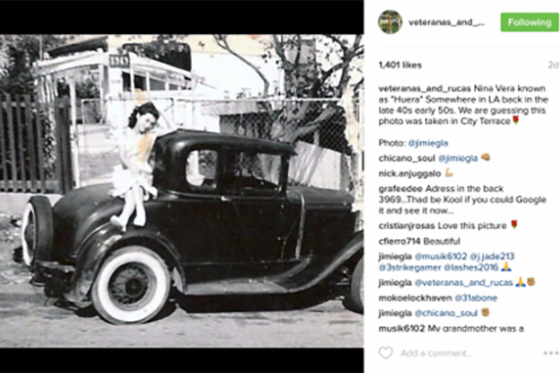
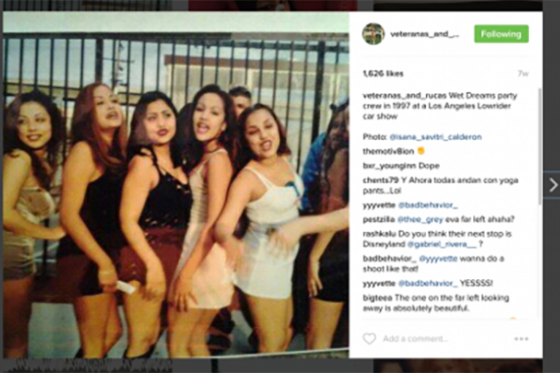

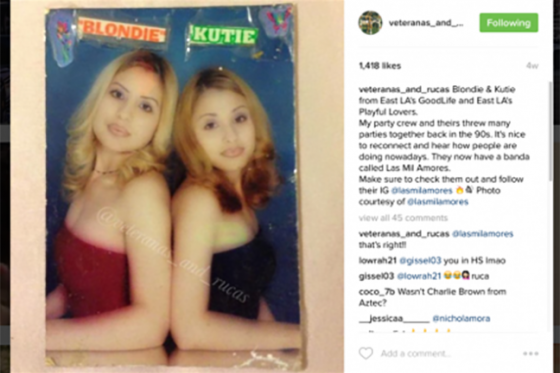

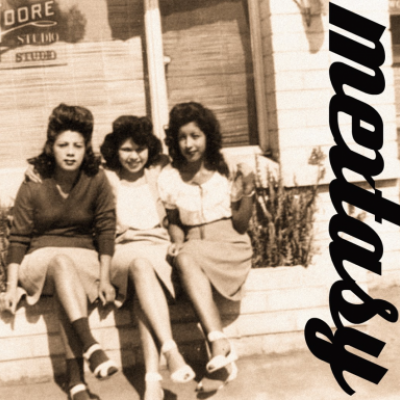
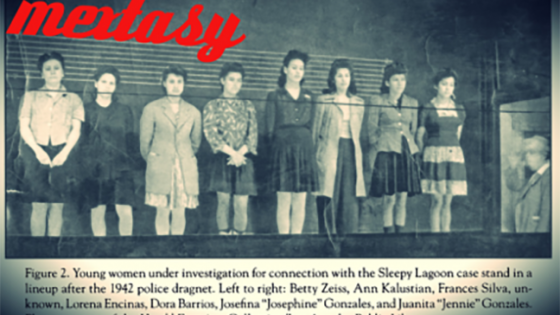


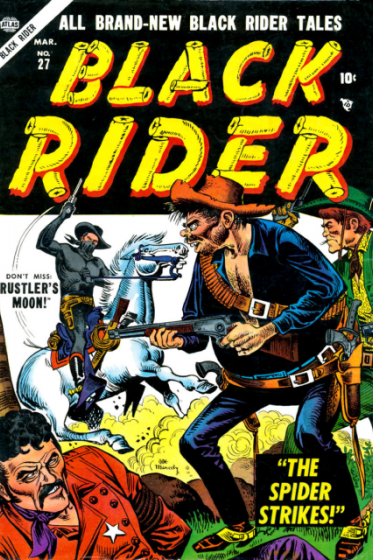




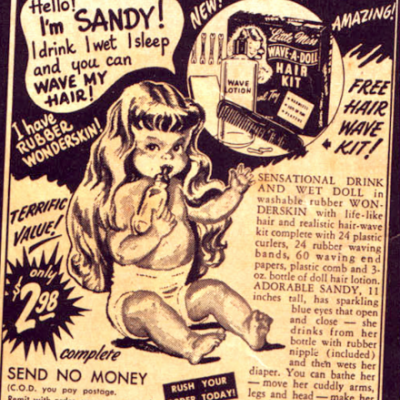
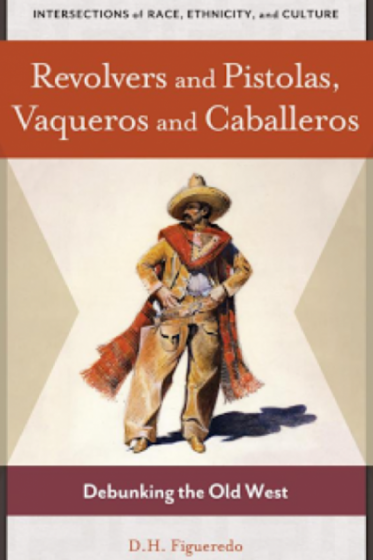
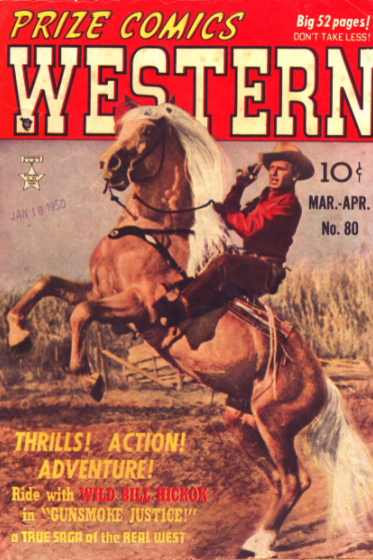
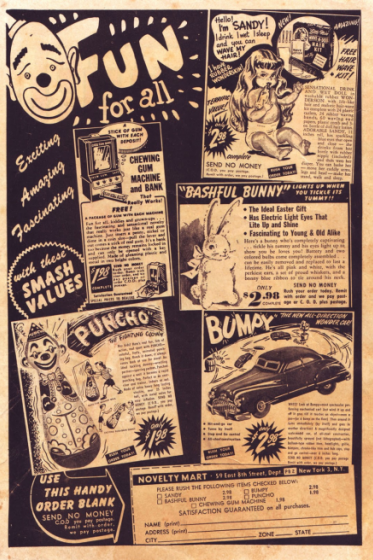


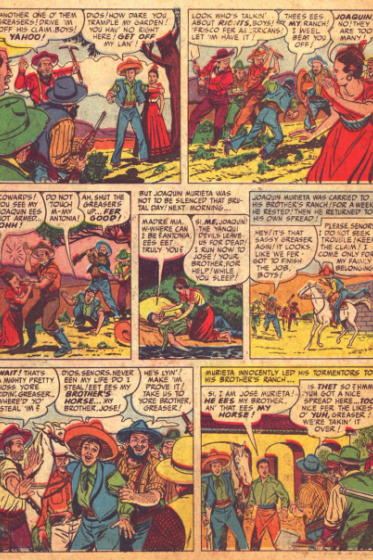

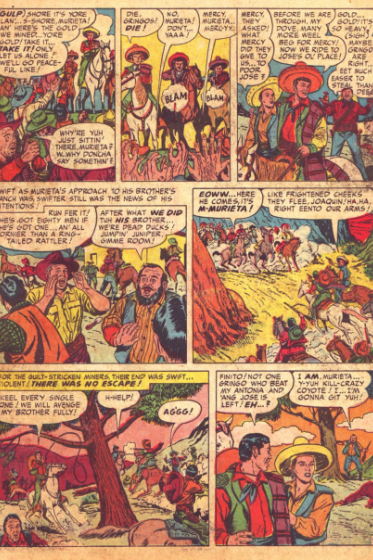


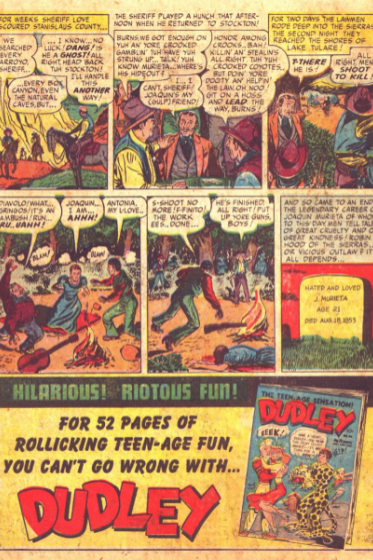
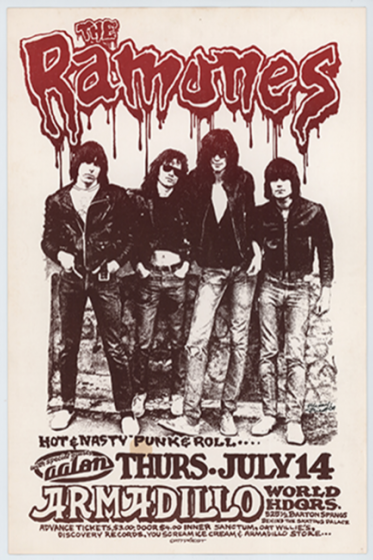

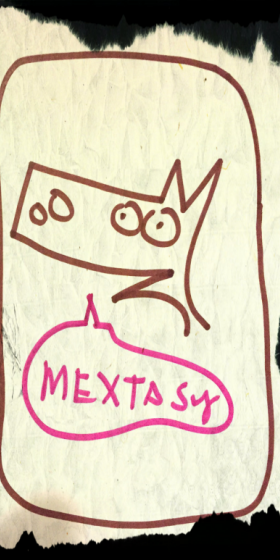
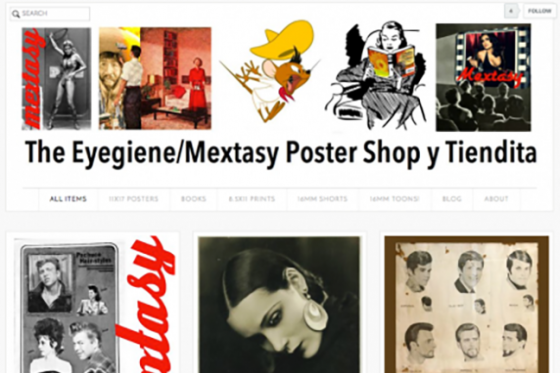
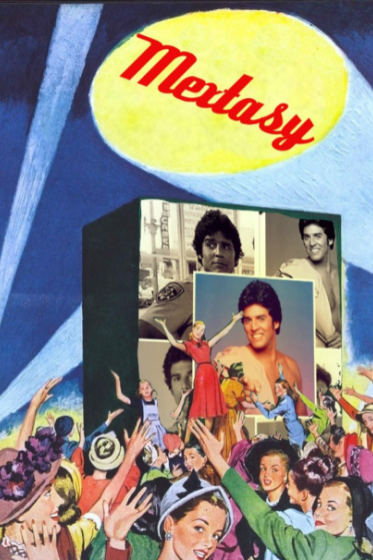

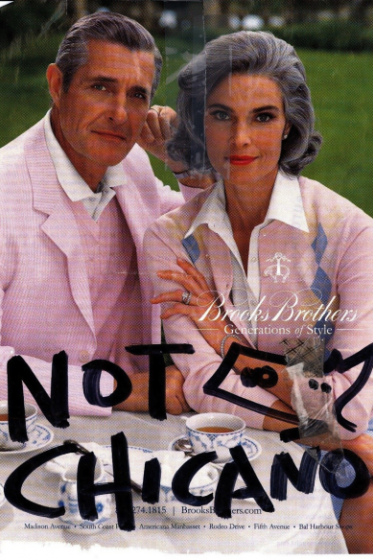



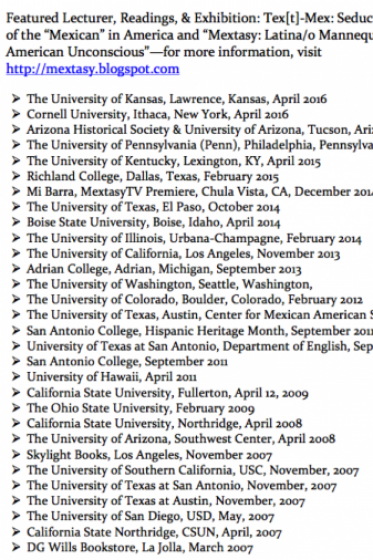

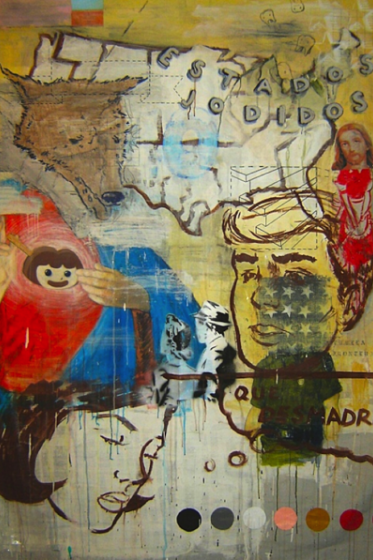
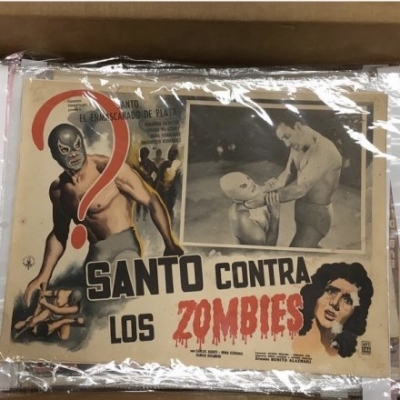

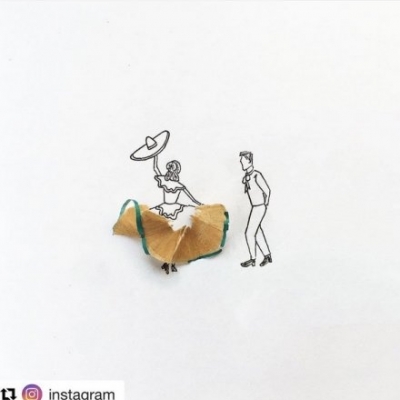
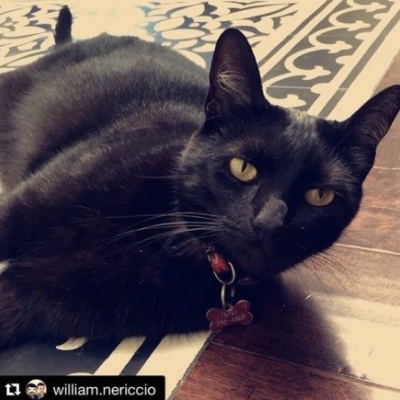

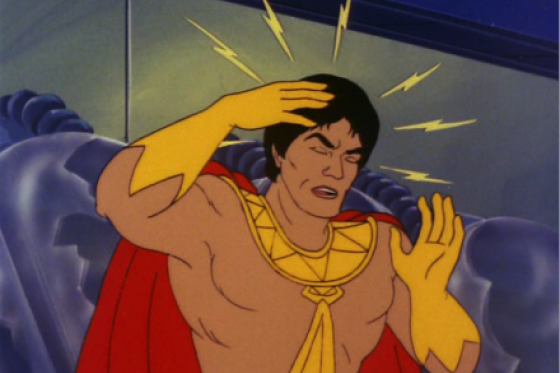





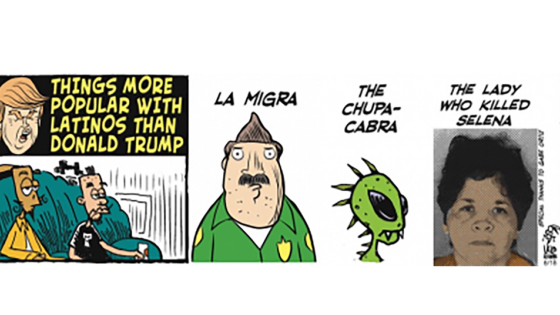

No comments:
Post a Comment